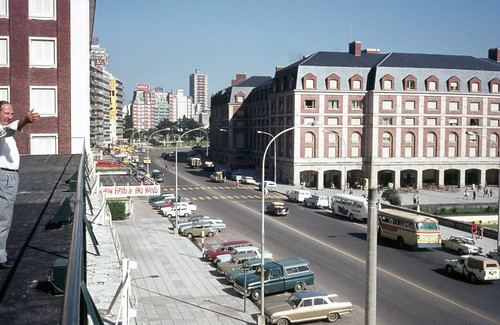Argentina peso at risk of another devaluation after election, Reuters poll shows
Argentina #Argentina

A one hundred Argentine peso bill sits on top of several one hundred U.S. dollar bills in this illustration picture taken October 17, 2022. REUTERS/Agustin Marcarian/Illustration/File Photo Acquire Licensing Rights
BUENOS AIRES, Sept 7 (Reuters) – Argentina’s troubled peso currency is at risk of suffering another devaluation after October’s presidential election or a potential second round in November, a Reuters poll of strategists found.
Last month, as part of an agreement with the International Monetary Fund (IMF), the Peronist government depreciated the benchmark official exchange rate by nearly 18% and pegged it at 350 per dollar in the wake of a key primary vote.
But now it is expected to trade at 419.8 per dollar in 3 months, according to the median estimate of 19 economists polled Sept. 1-5. This would imply a 16.6% devaluation on the heels of the Oct. 22 vote and a possible second round on Nov. 19.
Only one respondent saw the peso virtually unchanged at 355 per dollar in the period while all the remaining participants viewed a break of the peg, with estimates ranging from 383.8 to Goldman Sachs’ forecast of 700 per dollar.
“Pegging the official exchange rate is complex because inflation will have eroded any competitiveness gains obtained with the devaluation after the primaries,” said Lorenzo Sigaut Gravina, research director at Equilibra.
“That is why, following a few weeks of calm, we expect a significant adjustment in the official exchange rate towards the end of the year … the IMF will demand another correction to make new disbursements,” he added.
The Fund, which Argentine media says has questioned the complicated currency scheme of multiple rates, acknowledged “upfront efforts to strengthen the FX regime” as it released a tranche of the country’s credit line after the devaluation.
In 12 months, the peso is forecast to weaken 65% to trade at 1,004 per dollar. In freely traded parallel markets, it is already quoted closer to that level, at around 720 , for a nearly 100% spread over the official rate.
Current President Alberto Fernandez and Economy Minister Sergio Massa – who the Peronists chose as their candidate to replace Fernandez – blame this year’s drought, opposition tactics, and corporate greed for Argentina’s economic woes.
By contrast, the main political contenders Javier Milei and Patricia Bullrich, whose parties relegated the Peronists to a third place in the primary, point to excessive spending and money printing as the roots of Argentina’s financial ordeal.
“The government will have to devalue again because it’s running out of gas – whether it’s after the presidential vote or the second round, that will depend on the results,” Gabriel Caamaño, managing partner at Consultora Ledesma, said.
So far in 2023, the Argentine peso is down 50%. The Brazilian real , and the Mexican peso , Latin America’s top currencies, have gained 6.4% and nearly 12% respectively.
In one year, the real is expected to trade at 5.03 per dollar, just 1.2% weaker than its value on Tuesday. The Mexican peso is also seen with a relatively small loss of 2.3% in 12 months, changing hands at 17.84 per dollar.
(For other stories from the September Reuters foreign exchange poll:)
Reporting and polling by Gabriel Burin in Buenos Aires; Additional polling by Devayani Sathyan, Pranoy Krishna and Sujith Pai in Bengaluru; Editing by Alison Williams
Our Standards: The Thomson Reuters Trust Principles.